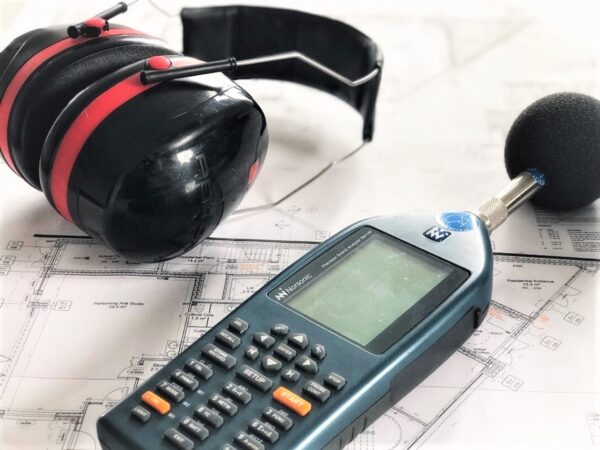
Acoustic & Sound Testing Terms
Posted on May 20, 2022
In the field of acoustics and sound insulation testing, there are a large number of terms and abbreviations can be quite hard to follow.
To try and make this easier to understand, we have written the following list, which should help you to decipher the main terms and abbreviations relating to acoustics and sound insulation testing:
Pre-Completion Sound Insulation Testing (PCST) – A new requirement to Part E where structures not conforming to the RSD will be tested prior to completion to check they reach the required standards.
Decibel (dB) – The most commonly used unit to measure sound.
Ctr – The correction to a sound insulation quality to take into account low frequency noise.
DnT,w – The measurement used to measure the airborne sound insulation between two rooms (on site).
DnT,w+Ctr – See above, but with the low frequency correction factor included.
Rw – The measurement used to relate the sound insulation of a material or building element in a laboratory.
Airborne Sound – Sound that’s transmitted through the party wall and/or floor via speech, radio & TV etc.
Impact Sound – Sound that’s transmitted through the party floor via footsteps, jumping or moving furniture usually from the dwelling above.
Flanking Noise – Flanking noise transmission occurs when sound travels along elements shared by adjacent structures. Sound does not always travel straight through the building element. If the wall, floor, or partition concerned has good sound-reducing capabilities, the sound will travel from A to B by the easiest route, often around the sides, top or bottom of the party wall or floor. It’s worth noting that flanking transmission can exceed direct transmission and damage the overall capabilities of the construction if flanking constructions and details are not correctly specified and constructed.
Flanking Transmission – Sound transmitted between two rooms using an indirect path e.g., the top, bottom, or sides of a separating wall.
Frequency – The number of pressure variations per second that gives a sound its distinctive tone.
Hertz (Hz) – The unit of the frequency of the sound.
Impact Sound – Sound resulting from direct impact on a building element.
Internal Floor – Any floor that is not a separating floor.
Internal Wall – Any wall that does not have a separation function.
Separating Floor – Floor that separates flats or rooms for residential purposes.
Separating Wall – Wall that separates adjoining dwellings, houses, flats or rooms.
LnT,w – The measurement used to measure the impact sound insulation of floors (on site)
Lnw – the measurement used for laboratory impact sound testing.
Noise – Unwanted sound/excess sound
Pre-Completion Testing (PCT) – A new requirement to Part E where structures not conforming to the RSD will be tested prior to completion to check they reach the required standards.
Robust Standard Detail (RSD) – A collection of pre-approved constructions that, if used, negate the need for PCT
Sound Reduction Index (SRI) – A quantity measured in a laboratory that characterises the sound insulation properties of a material or building element in a stated frequency band.

Sound Proofing Design and Testing
Getting the soundproofing design right from the word go, is key, and APT Sound Testing can help in all areas of acoustic design and sound insulation testing. For more information on our UKAS accredited sound testing or acoustic design services, please contact us at info@aptsoundtesting.co.uk or call us on 01525 303905.
Alternately for more information on how to prepare for your precompletion sound testing please download our sound testing checklist, or visit our website at www.aptsoundtesting.co.uk